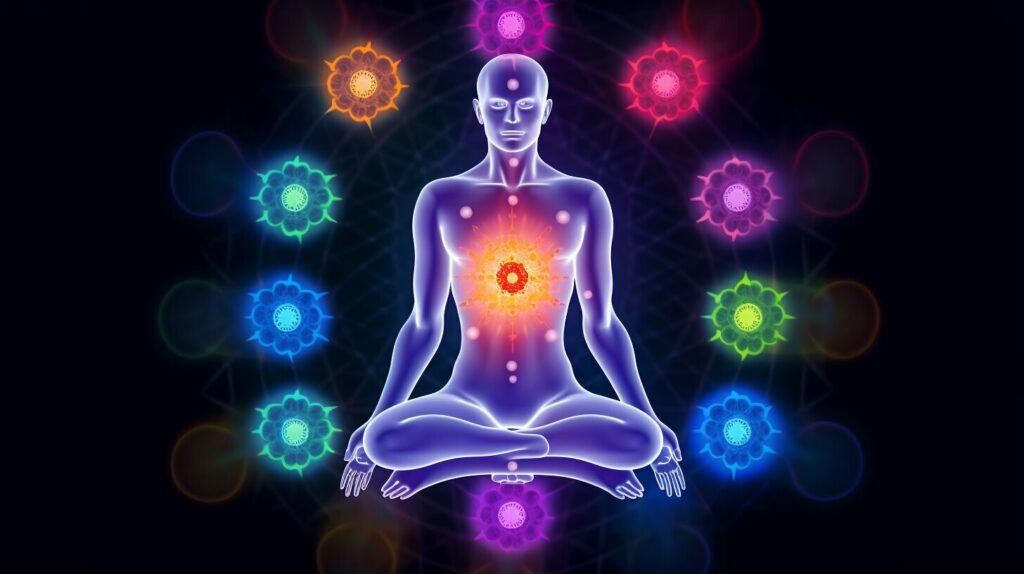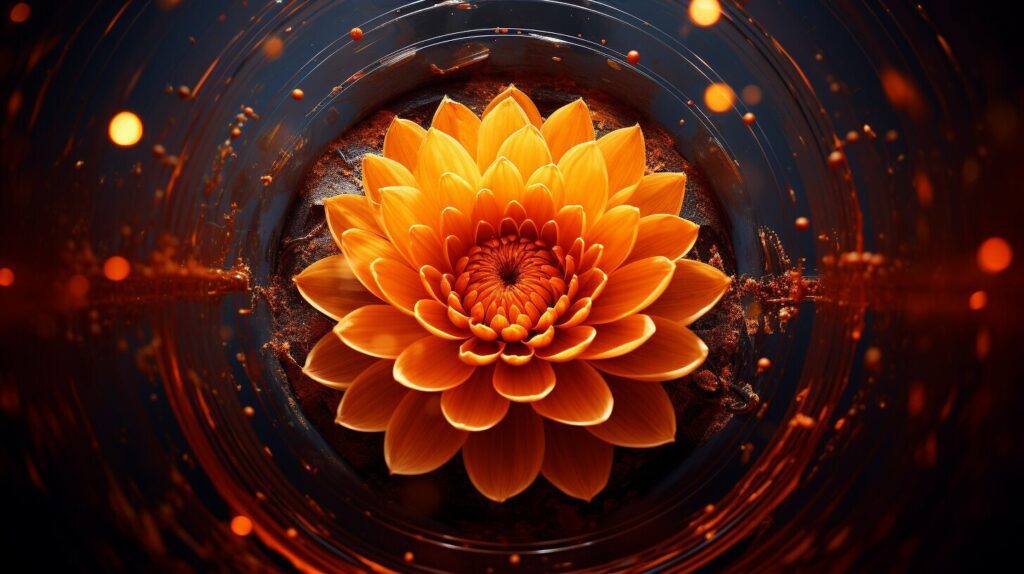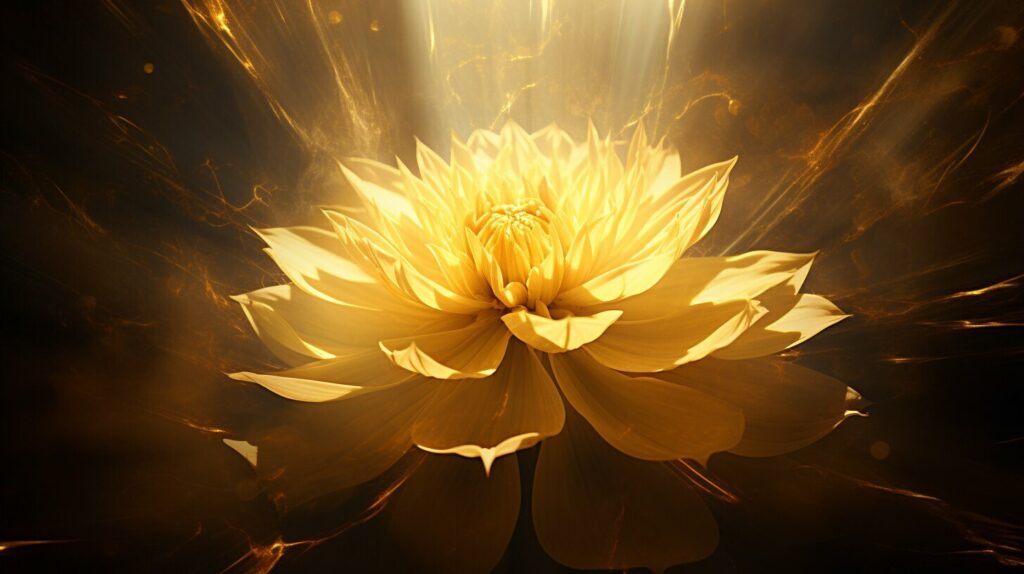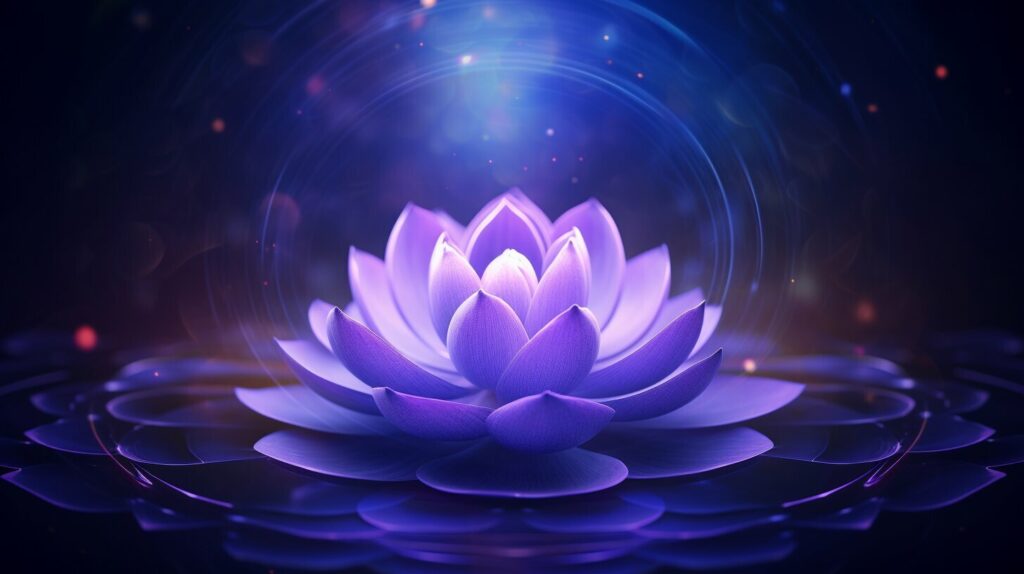Embarking on a wellness journey starts with understanding which chakra in your body needs healing. Our chakras are vital energy centers that play a significant role in our overall well-being. Each chakra is associated with different aspects of our physical and spiritual selves, and when one is out of balance, it can impact us on many levels.
The root chakra located at the base of the spine influences our feelings of safety and security. The sacral chakra, positioned below the belly button, governs our sexual and creative energies. The solar plexus chakra, located on the stomach, affects our confidence and self-esteem. The heart chakra, near the heart, is responsible for our ability to love. The throat chakra, inside the throat, influences our verbal expression. The third eye chakra, between the eyes, guides our intuition. Lastly, the crown chakra, on top of the head, connects us to spirituality and our life’s purpose.
If you are experiencing symptoms such as physical pain, emotional overwhelm, difficulty in communication, or lack of concentration, it may indicate an imbalance in the corresponding chakra. By identifying which chakra needs healing, you can focus your efforts on rebalancing that energy center and restoring harmony within yourself.
Key Takeaways:
- Understanding the seven major chakras and their corresponding energies is crucial in identifying which chakra needs healing.
- Each chakra influences various aspects of our physical, emotional, and spiritual well-being.
- Symptoms such as pain, emotional distress, communication difficulties, or lack of focus may indicate an imbalance in a specific chakra.
- By maintaining awareness and regularly checking in with our chakras, we can promote balance and harmony within ourselves.
- Embarking on a wellness journey starts with identifying and healing the imbalances within our chakras.
Understanding the Seven Major Chakras
In order to identify the chakra that needs healing, it’s crucial to understand the role and influence of each of the seven major chakras. These energy centers, located throughout the body, have a profound effect on our physical and spiritual well-being. By gaining insight into their unique qualities, we can engage in targeted healing practices to restore balance and harmony.

The first of the seven major chakras is the root chakra, known as Muladhara. Positioned at the base of the spine, it is associated with feelings of safety and security. When imbalanced, one may experience anxiety, fear, or a lack of grounding.
| Chakra | Location | Influence |
|---|---|---|
| Root chakra | Base of the spine | Feelings of safety and security |
| Sacral chakra | Below the belly button | Sexual and creative energies |
| Solar plexus chakra | On the stomach | Confidence and self-esteem |
| Heart chakra | Near the heart | Ability to love |
| Throat chakra | Inside the throat | Verbal expression |
| Third eye chakra | Between the eyes | Intuition |
| Crown chakra | On top of the head | Spiritual connections and understanding life purpose |
To restore the sacral chakra (Svadhisthana), located below the belly button, it is important to stimulate and balance sexual and creative energies. When imbalanced, one may experience a lack of passion or difficulty expressing emotions.
The solar plexus chakra (Manipura), positioned on the stomach, governs confidence and self-esteem. Imbalances can lead to feelings of powerlessness or a lack of motivation.
Heart Chakra (Anahata)
Near the heart, the heart chakra plays a crucial role in our ability to give and receive love. When imbalanced, one may struggle with trust issues or experience difficulty forming deep connections.
“The throat chakra (Vishuddha), found inside the throat, is responsible for verbal expression. It allows us to speak our truth and communicate effectively. Imbalances can manifest as difficulty in expressing oneself or fear of judgment.”
The third eye chakra (Ajna), located between the eyebrows, is associated with intuition and inner wisdom. When imbalanced, one may feel disconnected from their intuition or lack clarity in decision-making.
Finally, the crown chakra (Sahasrara), situated on top of the head, represents our spiritual connections and understanding of life purpose. When out of balance, one may feel spiritually disconnected or struggle with a lack of direction.
Bringing Chakras into Balance
If you’re experiencing symptoms such as physical pain, emotional overwhelm, or difficulty in communication, it may indicate an imbalance in the corresponding chakra. To restore harmony, various practices can be helpful. Connecting with nature, practicing grounding exercises, wearing colors associated with specific chakras, and engaging in movement or postures that target specific energy centers are all effective ways to bring the chakras into balance.
It is important to regularly check in with the chakras to maintain overall balance and harmony in the body, mind, and spirit. By understanding the role and influence of each chakra, we can identify the areas in need of healing and engage in practices that nourish and restore our energy centers.
Root Chakra (Muladhara)
The root chakra, located at the base of the spine, is the foundation of our physical and emotional well-being. It is associated with feelings of safety and security, providing us with a sense of stability in life.
When the root chakra is imbalanced, it can manifest through various symptoms such as anxiety, fear, restlessness, or even physical ailments like lower back pain or digestive issues. To bring balance to the root chakra, we can engage in practices that promote grounding, stability, and a sense of connection to the Earth.
One effective way to activate and heal the root chakra is by spending time in nature. Whether it’s taking a walk in the park, practicing outdoor yoga, or simply sitting on the grass, immersing ourselves in the natural world can help restore balance to this energy center. Additionally, wearing or surrounding ourselves with red-colored objects or gemstones like garnet or red jasper can stimulate the root chakra’s energy.

Movement-based practices like walking, running, or dancing can also be beneficial for grounding and strengthening the root chakra. By focusing on the sensation of our feet connecting with the earth, we can bring our awareness to this energy center and release any blockages or imbalances that may be present.
Regularly checking in with our root chakra is essential for maintaining its balance and overall well-being. By honoring our need for safety and security, we can cultivate a strong foundation that supports our physical health, emotional stability, and spiritual growth.
Sacral Chakra (Svadhisthana)
The sacral chakra, situated below the belly button, is responsible for our creative expression and sensuality. It is the energy center that governs our emotions and the ability to experience pleasure. When the sacral chakra is balanced, we feel a natural flow of energy, creativity, and passion in our lives.
An imbalanced sacral chakra can manifest in various ways, such as a lack of inspiration, difficulty in expressing emotions, or feeling disconnected from one’s sensuality. Physical symptoms may include lower back pain, reproductive issues, or urinary problems.
To bring the sacral chakra into balance, there are several practices that can be beneficial. Engaging in creative activities such as painting, dancing, or writing can help stimulate the flow of energy in the sacral chakra. Practicing mindfulness and connecting with our emotions through meditation or journaling can also assist in balancing this chakra.

| Signs of an Imbalanced Sacral Chakra | Ways to Balance the Sacral Chakra |
|---|---|
|
|
By nurturing and balancing the sacral chakra, we can unlock our creative potential, enhance our emotional well-being, and embrace our sensual nature. Remember to listen to your body and intuition as you explore practices that resonate with you, and always seek professional advice if needed.
Solar Plexus Chakra (Manipura)
The solar plexus chakra, located in the stomach area, is the seat of personal power and self-worth. This chakra governs our confidence, self-esteem, and ability to assert ourselves in the world. When the solar plexus chakra is in balance, we feel a strong sense of self-worth, confidence, and motivation to pursue our goals and dreams.
An imbalanced solar plexus chakra can manifest in various ways. Some common signs of an imbalanced solar plexus chakra include low self-esteem, lack of confidence, fear of rejection, difficulty making decisions, and a constant need for validation from others. Physical symptoms may include digestive issues, stomach ulcers, and weight gain or loss.
To bring balance to the solar plexus chakra, it is important to engage in practices that promote self-confidence and empowerment. These can include positive affirmations, visualization exercises, practicing gratitude, and setting healthy boundaries. Surrounding oneself with the color yellow, which is associated with the solar plexus chakra, can also be beneficial in stimulating and balancing this energy center.
By taking the time to nurture and heal the solar plexus chakra, we can cultivate a strong sense of self, tap into our personal power, and live a life filled with confidence and self-assurance.

| Solar Plexus Chakra | Keywords |
|---|---|
| Location | Stomach area |
| Associated qualities | Personal power, self-esteem, confidence |
| Imbalanced signs | Low self-esteem, lack of confidence, fear of rejection, digestive issues |
| Healing practices | Affirmations, visualization, gratitude, setting boundaries |
| Color | Yellow |
Heart Chakra (Anahata)
The heart chakra, situated near the heart, is the center of compassion, love, and emotional well-being. It plays a vital role in our ability to connect with others and ourselves on a deep, emotional level. When the heart chakra is balanced, we experience love, empathy, and a sense of harmony in our relationships and surroundings.
“The heart chakra is like a bridge that connects the physical and spiritual realms, allowing us to experience unconditional love and compassion.”
Imbalances in the heart chakra can manifest in various ways. Some common signs of an imbalanced heart chakra include feelings of resentment, jealousy, fear of intimacy, or the inability to forgive. Physical symptoms may include heart-related issues, asthma, or immune system disorders.
Healing and balancing the heart chakra can be achieved through several practices and techniques. Yoga poses such as the Cobra or Camel pose can help open and activate the heart chakra. Meditating on feelings of love and gratitude, or practicing forgiveness exercises, can also be beneficial. Surrounding yourself with greenery, such as plants or nature walks, can provide a sense of calm and balance to the heart chakra.

Table:
| Signs of Balanced Heart Chakra | Signs of Imbalanced Heart Chakra |
|---|---|
| Unconditional love | Resentment and jealousy |
| Compassion and empathy | Fear of intimacy |
| Harmonious relationships | Inability to forgive |
By regularly checking in with our heart chakra and practicing healing techniques, we can cultivate a deep sense of empathy, love, and emotional well-being. When our heart chakra is in balance, we are able to form deeper connections with ourselves and others, leading to a more fulfilling and joyful life.
The Throat Chakra (Vishuddha)
The throat chakra, located within the throat, governs our ability to communicate and express ourselves verbally. It plays a vital role in effectively conveying our thoughts, ideas, and emotions to others. When the throat chakra is in balance, we can speak our truth with clarity and confidence. However, if this chakra becomes imbalanced, it can lead to difficulties in communication, causing us to feel misunderstood or struggle to express ourselves.
Imbalances in the throat chakra can manifest in various ways. Some common symptoms include experiencing a sore throat, hoarseness, or frequent throat-related issues. You may also find it challenging to express your feelings openly or fear judgment and criticism when speaking your mind. Additionally, difficulties in expressing creativity or finding the right words to articulate your thoughts can indicate an imbalance in this crucial chakra.
To bring the throat chakra back into balance and enhance your ability to communicate effectively, there are several practices you can incorporate into your daily life. Engaging in deep breathing exercises or practicing yoga postures that focus on gentle neck stretches can help to release any tension or blockages in the throat area. Meditation and chanting mantras, such as the powerful “Om” sound, can also stimulate and restore harmony to the throat chakra.

Wearing the color blue, which is associated with the throat chakra, can serve as a visual reminder to nurture this energy center. Surrounding yourself with calming blue-colored objects or incorporating blue gemstones, such as aquamarine or blue lace agate, into your life can amplify the healing effects. Remember to spend time in nature, as the soothing sounds of flowing water or gentle breezes can help clear any blockages in your throat chakra, allowing for free expression.
By regularly checking in with your throat chakra and implementing these practices, you can strengthen your ability to communicate authentically, express your emotions, and connect with others on a deeper level. Embracing the power of the throat chakra will enable you to confidently share your truth, contributing to a more harmonious and fulfilling life.
Third Eye Chakra (Ajna)
The third eye chakra, positioned between the eyes, is the seat of intuition and inner wisdom. It is associated with higher consciousness and the ability to see beyond the physical realm. When the third eye chakra is balanced, it enables us to trust our intuition, make clear decisions, and tap into our inner guidance.
To activate and heal the third eye chakra, there are various practices that can be beneficial. One effective technique is meditation, specifically focusing on the area between the eyebrows. This allows us to quiet the mind, enhance our intuition, and gain clarity in our thoughts.

In addition to meditation, certain crystals and gemstones can help balance the third eye chakra. Amethyst, lapis lazuli, and clear quartz are known to stimulate intuition and enhance psychic abilities. Placing these stones on the third eye during meditation or wearing them as jewelry can support the healing process.
Opening the third eye chakra can also be facilitated through specific yoga poses. Child’s pose, forward bends, and gentle inversions are ideal for activating and energizing this chakra. These poses help to calm the mind, promote clarity, and connect us to the inner realms of wisdom.
By focusing on the third eye chakra and incorporating these practices into our daily lives, we can strengthen our intuition, expand our consciousness, and gain a deeper understanding of ourselves and the world around us.
Crown Chakra (Sahasrara)
The crown chakra, located at the top of the head, represents our spiritual connection and our understanding of our purpose in life. It is the highest energy center, symbolizing divine consciousness and enlightenment. When the crown chakra is in balance, we experience a deep sense of spiritual connectedness and a clear understanding of our life’s purpose.
Imbalances in the crown chakra can manifest in various ways, including feelings of disconnectedness, lack of direction, or a sense of being lost. Physical symptoms may include headaches, migraines, and dizziness. If you find yourself questioning the meaning and purpose of your life or feeling disconnected from your spiritual self, it may be an indication that your crown chakra needs healing.
To heal and balance the crown chakra, there are several practices you can incorporate into your daily life. Meditation is especially beneficial for opening and aligning the crown chakra. Taking time to quiet the mind and connect with your higher self can deepen your spiritual connection and provide clarity. Engaging in activities that promote a sense of awe and wonder, such as spending time in nature or practicing gratitude, can also help activate and balance the crown chakra.
| Signs of an Imbalanced Crown Chakra: |
|---|
| Emotional: Feeling disconnected, lack of purpose or direction, confusion |
| Physical: Headaches, migraines, dizziness |
| Healing Practices: |
| – Meditation for spiritual connection – Spending time in nature – Practicing gratitude – Engaging in activities that inspire awe and wonder |
By dedicating time and intention to healing the crown chakra, you can enhance your spiritual journey and gain a deeper understanding of your life’s purpose. Remember to listen to your intuition and trust the process as you embark on this transformative healing journey.

Chakra Healing Techniques and Practices
There are several powerful techniques and practices that can be used to heal and balance your chakras, enhancing your overall well-being. Chakra meditation is a popular method that involves focusing on each chakra individually, visualizing its energy, and allowing any blockages to be released. This can be done by sitting in a comfortable position, closing your eyes, and bringing your attention to each chakra, starting from the root and moving up to the crown. Take deep breaths, imagining the energy flowing freely through each chakra, and visualize any negativity or blockages being released.
Healing with chakra crystals is another effective technique. Different crystals correspond to each chakra and can be used to balance their energies. For example, amethyst is associated with the crown chakra and can promote spiritual growth, while citrine is linked to the solar plexus chakra and can boost confidence and self-esteem. Place the crystals on or near the corresponding chakra during meditation or wear them as jewelry to harness their healing properties.
Activating the chakras for self-healing can be done through movement and postures. Yoga poses, such as the mountain pose for the root chakra or the fish pose for the throat chakra, can help activate and align the chakras. Engaging in these physical practices can release stagnant energy and promote balance within the chakra system. Additionally, connecting with nature, practicing grounding exercises, and surrounding yourself with the specific colors associated with each chakra can also aid in chakra healing.
Chakra Healing Techniques and Practices:
- Chakra meditation
- Healing with chakra crystals
- Activating chakras through yoga poses
- Connecting with nature and grounding exercises
- Using specific colors associated with each chakra
Regularly checking in with your chakras is essential for maintaining balance and harmony in the body, mind, and spirit. By being mindful of any symptoms or imbalances, you can address them promptly through chakra healing techniques and practices. Embrace these powerful methods to unleash the full potential of your chakras and experience a greater sense of well-being.
| Chakra | Location | Corresponding Energy |
|---|---|---|
| Root Chakra | Base of the spine | Feelings of safety and security |
| Sacral Chakra | Below the belly button | Sexual and creative energies |
| Solar Plexus Chakra | Stomach area | Confidence and self-esteem |
| Heart Chakra | Near the heart | Ability to love |
| Throat Chakra | Inside the throat | Verbal expression |
| Third Eye Chakra | Between the eyes | Intuition |
| Crown Chakra | Top of the head | Spiritual connections, understanding life purpose |

Maintaining Chakra Balance in Daily Life
In order to maintain a harmonious balance of your chakras, it is essential to incorporate chakra balancing practices into your daily routine. By nurturing and tending to your energy centers regularly, you can support overall well-being and enhance your physical, emotional, and spiritual health.
One effective chakra balancing practice is connecting with nature. Spending time outdoors, whether it’s a walk in the park, gardening, or simply sitting under a tree, can help ground your energy and restore balance. Engaging with the natural elements allows you to tap into the Earth’s energy, which in turn can realign and harmonize your chakras.
Another practice to consider is wearing specific colors associated with each chakra. Each chakra is linked to a particular color, and by wearing clothing or accessories in these hues, you can stimulate and balance the corresponding energy center. For example, wearing red for the root chakra, orange for the sacral chakra, and so on.
Movement and posture can also play a significant role in chakra balancing. Certain yoga poses or physical exercises can help activate and align specific chakras. For example, practicing chest-opening poses like the camel or cobra can stimulate the heart chakra, while forward bends can activate and bring balance to the root chakra.
| Chakra | Associated Color |
|---|---|
| Root Chakra | Red |
| Sacral Chakra | Orange |
| Solar Plexus Chakra | Yellow |
| Heart Chakra | Green |
| Throat Chakra | Blue |
| Third Eye Chakra | Indigo |
| Crown Chakra | Purple |
Regularly checking in with your chakras is vital to maintaining balance. Take a few moments each day to close your eyes, breathe deeply, and focus your awareness on each energy center individually. This simple mindfulness practice can help you identify any imbalances or blockages and guide you towards the appropriate chakra healing techniques or practices.
Remember, achieving and maintaining chakra balance is an ongoing process. By integrating chakra balancing practices into your daily life, you can cultivate a deeper connection with yourself, promote vitality, and embrace a sense of inner harmony.

Conclusion
Identifying and healing imbalanced chakras is a transformative path towards overall well-being and self-discovery. The seven major chakras in our body play a vital role in our physical, emotional, and spiritual lives. When these energy centers become imbalanced, it can manifest as physical ailments, emotional distress, or mental challenges.
The root chakra, located at the base of the spine, governs feelings of safety and security. The sacral chakra, below the belly button, controls sexual and creative energies. The solar plexus chakra, on the stomach, influences confidence and self-esteem. The heart chakra, near the heart, is responsible for our ability to love. The throat chakra, inside the throat, affects our verbal expression. The third eye chakra, between the eyes, guides intuition. And the crown chakra, at the top of the head, connects us to spiritual realms and helps us understand our life purpose.
If you are experiencing symptoms such as pain, stiffness, emotional overwhelm, difficulty in communication, or lack of concentration, it may indicate an imbalance in the corresponding chakra. To restore balance, various practices can be incorporated into daily life. Connecting with nature, practicing grounding exercises, wearing specific colors associated with each chakra, and engaging in specific movements or postures can all aid in balancing and healing the chakras.
Regularly checking in with your chakras, through meditation or self-reflection, is essential for maintaining balance and harmony in your body, mind, and spirit. By nurturing and healing our chakras, we embark on a journey of self-discovery and overall well-being.
FAQ
Q: How do I know which chakra needs healing?
A: To determine which chakra needs healing, it is important to understand the various aspects of the seven major chakras in the body. Each chakra influences different physical and spiritual aspects of life, and when one is out of balance, it can lead to physical, emotional, or mental impact. If one is experiencing symptoms such as pain, stiffness, emotional overwhelm, difficulty in communication, or lack of concentration, it may indicate an imbalance in the corresponding chakra.
Q: What are the seven major chakras and what do they represent?
A: The seven major chakras in the body are the root chakra, sacral chakra, solar plexus chakra, heart chakra, throat chakra, third eye chakra, and crown chakra. Each chakra is associated with specific physical and spiritual aspects. The root chakra represents feelings of safety and security, the sacral chakra governs sexual and creative energies, the solar plexus chakra influences confidence and self-esteem, the heart chakra governs the ability to love, the throat chakra is responsible for verbal expression, the third eye chakra controls intuition, and the crown chakra represents spiritual connections and understanding of one’s purpose in life.
Q: What are some practices to bring the chakras into balance?
A: Various practices can be helpful in bringing the chakras into balance. Connecting with nature, practicing grounding, wearing specific colors associated with each chakra, and engaging in specific movements or postures can aid in balancing the chakras. Additionally, meditation, using chakra crystals, and activating the chakras through visualization or affirmations are effective techniques for chakra healing.
Q: How can I maintain chakra balance in my daily life?
A: Incorporating chakra balancing practices into your daily life is essential for maintaining overall chakra balance. Regularly checking in with your chakras, practicing mindfulness and self-care, and engaging in activities that bring you joy and fulfillment can help keep your chakras aligned and in harmony.
Q: Are there other chakra healing therapies I can explore?
A: Yes, in addition to the practices mentioned, there are various other chakra healing therapies you can explore. These may include energy healing modalities such as Reiki or acupuncture, sound healing with singing bowls or tuning forks, and aromatherapy using essential oils that correspond to each chakra. It is important to find the healing techniques that resonate with you and seek guidance from a qualified practitioner if needed.
Source Links
- http://mindfulhealth.biz/chakras
- https://www.wikihow.com/Chakra-Test
- https://chopra.com/articles/5-signs-your-chakras-are-out-of-balance-and-how-to-test-them
